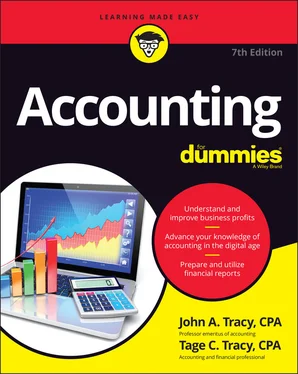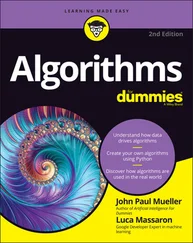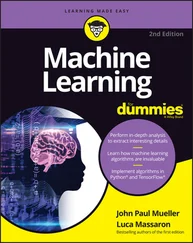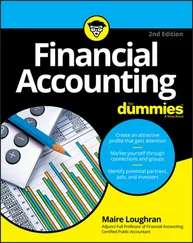John A. Tracy - Accounting For Dummies
Здесь есть возможность читать онлайн «John A. Tracy - Accounting For Dummies» — ознакомительный отрывок электронной книги совершенно бесплатно, а после прочтения отрывка купить полную версию. В некоторых случаях можно слушать аудио, скачать через торрент в формате fb2 и присутствует краткое содержание. Жанр: unrecognised, на английском языке. Описание произведения, (предисловие) а так же отзывы посетителей доступны на портале библиотеки ЛибКат.
- Название:Accounting For Dummies
- Автор:
- Жанр:
- Год:неизвестен
- ISBN:нет данных
- Рейтинг книги:3 / 5. Голосов: 1
-
Избранное:Добавить в избранное
- Отзывы:
-
Ваша оценка:
- 60
- 1
- 2
- 3
- 4
- 5
Accounting For Dummies: краткое содержание, описание и аннотация
Предлагаем к чтению аннотацию, описание, краткое содержание или предисловие (зависит от того, что написал сам автор книги «Accounting For Dummies»). Если вы не нашли необходимую информацию о книге — напишите в комментариях, мы постараемся отыскать её.
Accounting For Dummies
Accounting For Dummies — читать онлайн ознакомительный отрывок
Ниже представлен текст книги, разбитый по страницам. Система сохранения места последней прочитанной страницы, позволяет с удобством читать онлайн бесплатно книгу «Accounting For Dummies», без необходимости каждый раз заново искать на чём Вы остановились. Поставьте закладку, и сможете в любой момент перейти на страницу, на которой закончили чтение.
Интервал:
Закладка:
The accounting equation is a condensed version of the balance sheet. The balance sheet is the financial statement that summarizes a business’s assets on the one side and its liabilities plus its owners’ equity on the other side. As we just mentioned, liabilities and owners’ equity are the sources of the business’s assets. Each source has different types of claims on the assets, which we explain in Chapter 7.
One main function of the bookkeeping/accounting system is to record all transactions of a business — every single last one. If you look at transactions through the lens of the accounting equation, there’s a beautiful symmetry in transactions (well, beautiful to accountants at least). All transactions have a natural balance. The sum of financial effects on one side of a transaction equals the sum of financial effects on the other side. Thus, the name of the balance sheet — because in theory, the balance sheet should always be, well, in balance.
Suppose a business buys a new delivery truck for $65,000 and pays by check (how old-fashioned is that?). The truck asset account increases by the $65,000 cost of the truck, and cash in the bank decreases $65,000. Here’s another example: A company borrows $2 million from its bank. Its cash in the bank increases by $2 million, and the liability for its note payable to the bank increases by the same amount.
Just one more example: Suppose a business suffers a loss from a tornado because some of its assets were not insured (dumb!). The assets destroyed by the tornado are written off (decreased to zero balances), and the amount of the loss decreases the owners’ equity by the same amount. The loss works its way through the income statement but ends up as a decrease in retained earnings.
 Virtually all business recordkeeping systems use debits and credits for making sure that both sides of transactions are recorded and for keeping the two sides of the accounting equation in balance. A change in an account is recorded as either a debit or a credit according to the rules in Table 3-1.
Virtually all business recordkeeping systems use debits and credits for making sure that both sides of transactions are recorded and for keeping the two sides of the accounting equation in balance. A change in an account is recorded as either a debit or a credit according to the rules in Table 3-1.
TABLE 3-1Bookkeeping Rules for Debits and Credits
| Account Type | Increase | Decrease |
|---|---|---|
| Asset accounts | Debit | Credit |
| Liability accounts | Credit | Debit |
| Owners’ equity accounts | Credit | Debit |
An increase in an asset is tagged as a debit; an increase in a liability or owners’ equity account is tagged as a credit. Decreases are just the reverse. Following this scheme, the total of debits must equal the total of credits in recording every transaction. In brief: Debits have to equal credits. Isn’t that clever? Well, the main point is that the method works. Debits and credits have been used for centuries. (A book published in 1494 describes how business traders and merchants of the day used debits and credits in their bookkeeping.)
Note: Sales revenue and expense accounts also follow debit and credit rules. Revenue increases owners’ equity (and thus is a credit), and an expense decreases owners’ equity (and thus is a debit).
Following the rules of debits and credits, asset accounts have debit balances, and liabilities and owners’ equity accounts have credit balances. (Yes, a balance sheet account can have a wrong-way balance in unusual situations, such as cash having a credit balance because the business has written more checks than it has money for in its checking account.) The total of accounts with debit balances should equal the total of accounts with credit balances. When the total of debit balance accounts equals the total of credit balance accounts, the books are in balance.
 Even when the books are in balance, errors are still possible. The bookkeeper may have recorded debits or credits in the wrong accounts, or may have entered wrong amounts, or may have missed recording some transactions altogether. Having balanced books simply means that the total of accounts with debit balances equals the total of accounts with credit balances. The important thing is whether the books (the accounts) have correct balances, which depends on whether all transactions and other developments have been recorded correctly.
Even when the books are in balance, errors are still possible. The bookkeeper may have recorded debits or credits in the wrong accounts, or may have entered wrong amounts, or may have missed recording some transactions altogether. Having balanced books simply means that the total of accounts with debit balances equals the total of accounts with credit balances. The important thing is whether the books (the accounts) have correct balances, which depends on whether all transactions and other developments have been recorded correctly.
Juggling the Books to Conceal Embezzlement and Fraud
 Fraud and illegal practices occur in large corporations and in one-owner/manager-controlled small businesses — and in every size business in between. Some types of fraud are more common in small businesses, including sales skimming (not recording all sales revenue, to deflate the taxable income of the business and its owner) and the recording of personal expenses through the business (to make these expenses deductible for income tax). Some kinds of fraud are committed mainly by large businesses, including paying bribes to foreign officials and entering into illegal conspiracies to fix prices or divide the market. The purchasing managers in any size business can be tempted to accept kickbacks and under-the-table payoffs from vendors and suppliers.
Fraud and illegal practices occur in large corporations and in one-owner/manager-controlled small businesses — and in every size business in between. Some types of fraud are more common in small businesses, including sales skimming (not recording all sales revenue, to deflate the taxable income of the business and its owner) and the recording of personal expenses through the business (to make these expenses deductible for income tax). Some kinds of fraud are committed mainly by large businesses, including paying bribes to foreign officials and entering into illegal conspiracies to fix prices or divide the market. The purchasing managers in any size business can be tempted to accept kickbacks and under-the-table payoffs from vendors and suppliers.
Some years ago, my (coauthor John’s) wife and I hosted a Russian professor who was a dedicated Communist. I asked him what surprised him the most on his first visit to the United States. Without hesitation, he answered, “The Wall Street Journal.” I was puzzled. He then explained that he was amazed to read so many stories about business fraud and illegal practices in the most respected capitalist newspaper in the world. Many financial reporting fraud stories are on the front pages today, as they were when we wrote the previous editions of this book. And there are a number of stories of companies that agreed to pay large fines for illegal practices (usually without admitting guilt).
None of this is news to you. You know that fraud and illegal practices happen in the business world. Our point in bringing up this unpleasant topic is that fraud and illegal practices require manipulation of a business’s accounts. For example, if a business pays a bribe, it doesn’t record the amount in a bald-faced account called “bribery expense.” Rather, the business disguises the payment by recording it in a legitimate expense account (such as “repairs and maintenance expense” or “legal expense”). If a business records sales revenue before sales have taken place (a not-uncommon type of financial reporting fraud), it does not record the false revenue in a separate account called “fictional sales revenue.” The bogus sales are recorded in the regular sales revenue account.
Here’s another example of an illegal practice. Money laundering involves taking money from illegal sources (such as drug dealing) and passing it through a business to make it look legitimate — to give the money a false identity. This money can hardly be recorded as “revenue from drug sales” in the accounts of the business. Also, if an employee embezzles money from the business, he has to cover his tracks by making false entries in the accounts or by not making entries that should be recorded.
 Manipulating accounts to conceal fraud, illegal activities, and embezzlement is generally called juggling the accounts. Another term you’ve probably heard is cooking the books. Although this term is sometimes used in the same sense of juggling the accounts, cooking the books typically refers to deliberate accounting fraud in which the main purpose is to produce financial statements that tell a better story than is supported by the facts. Now here’s an irony: When crooks commit accounting fraud, they also need to know the real story, so they keep two sets of books — one for the fraud numbers and one for the real numbers.
Manipulating accounts to conceal fraud, illegal activities, and embezzlement is generally called juggling the accounts. Another term you’ve probably heard is cooking the books. Although this term is sometimes used in the same sense of juggling the accounts, cooking the books typically refers to deliberate accounting fraud in which the main purpose is to produce financial statements that tell a better story than is supported by the facts. Now here’s an irony: When crooks commit accounting fraud, they also need to know the real story, so they keep two sets of books — one for the fraud numbers and one for the real numbers.
Интервал:
Закладка:
Похожие книги на «Accounting For Dummies»
Представляем Вашему вниманию похожие книги на «Accounting For Dummies» списком для выбора. Мы отобрали схожую по названию и смыслу литературу в надежде предоставить читателям больше вариантов отыскать новые, интересные, ещё непрочитанные произведения.
Обсуждение, отзывы о книге «Accounting For Dummies» и просто собственные мнения читателей. Оставьте ваши комментарии, напишите, что Вы думаете о произведении, его смысле или главных героях. Укажите что конкретно понравилось, а что нет, и почему Вы так считаете.












